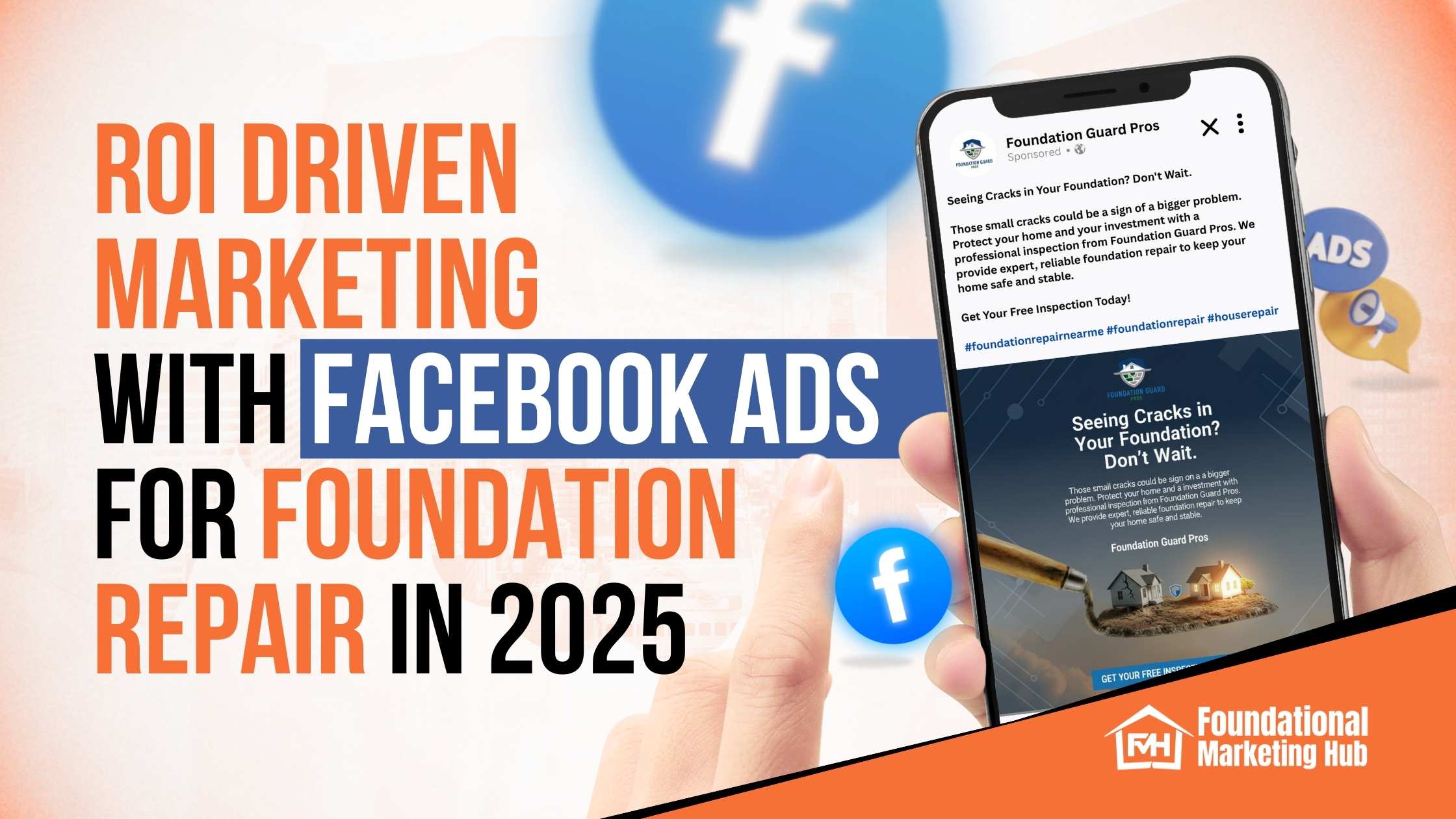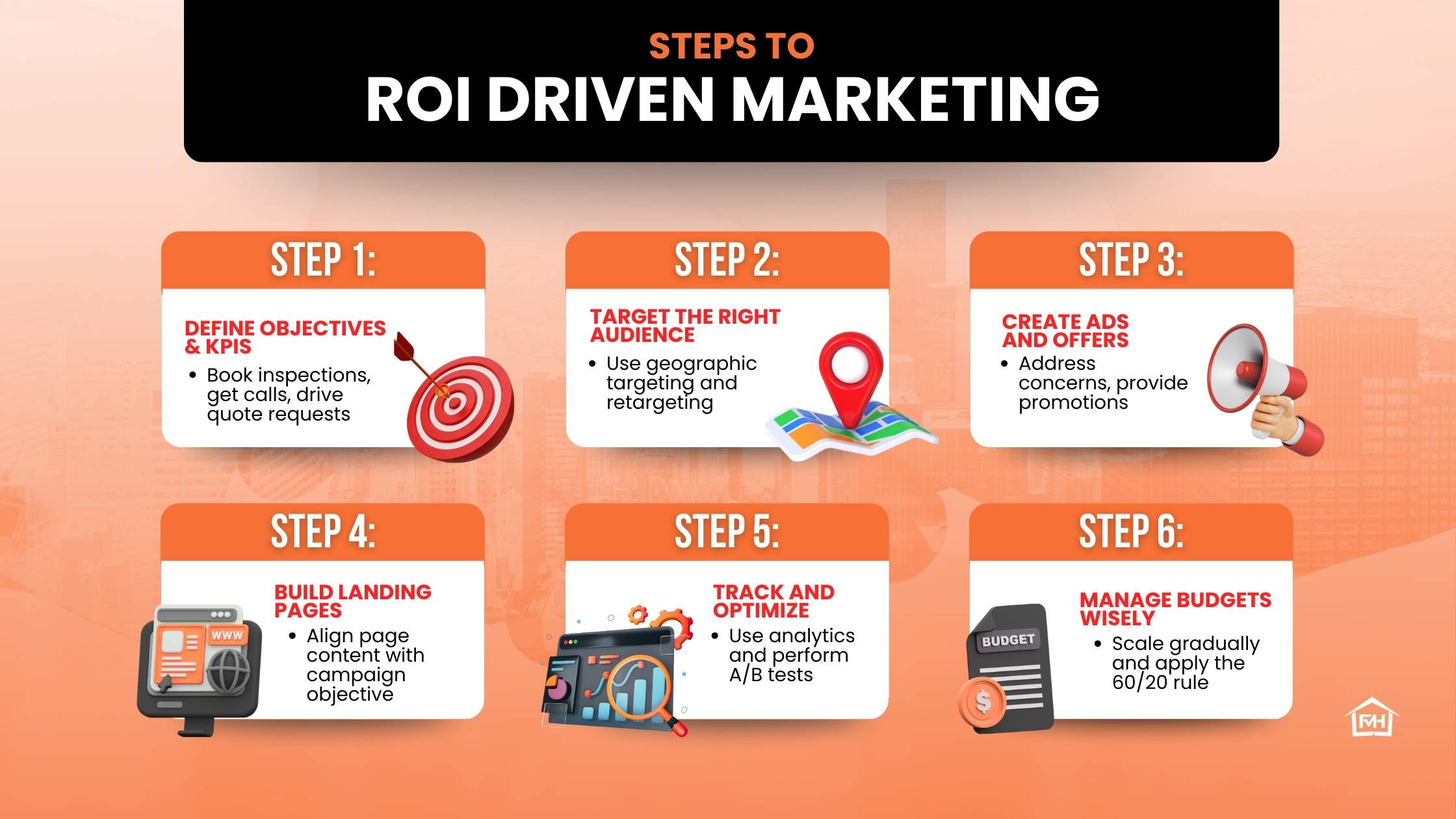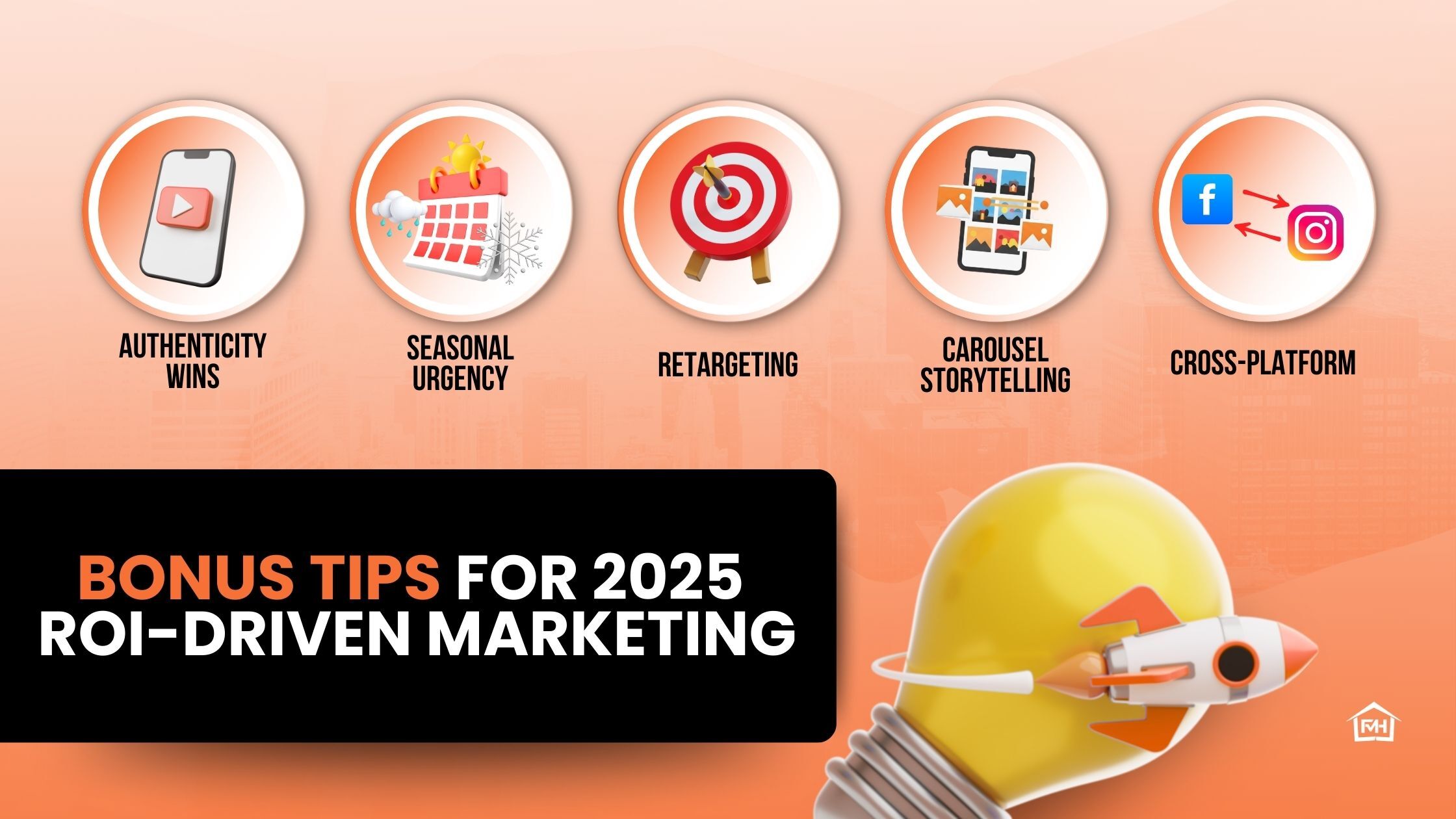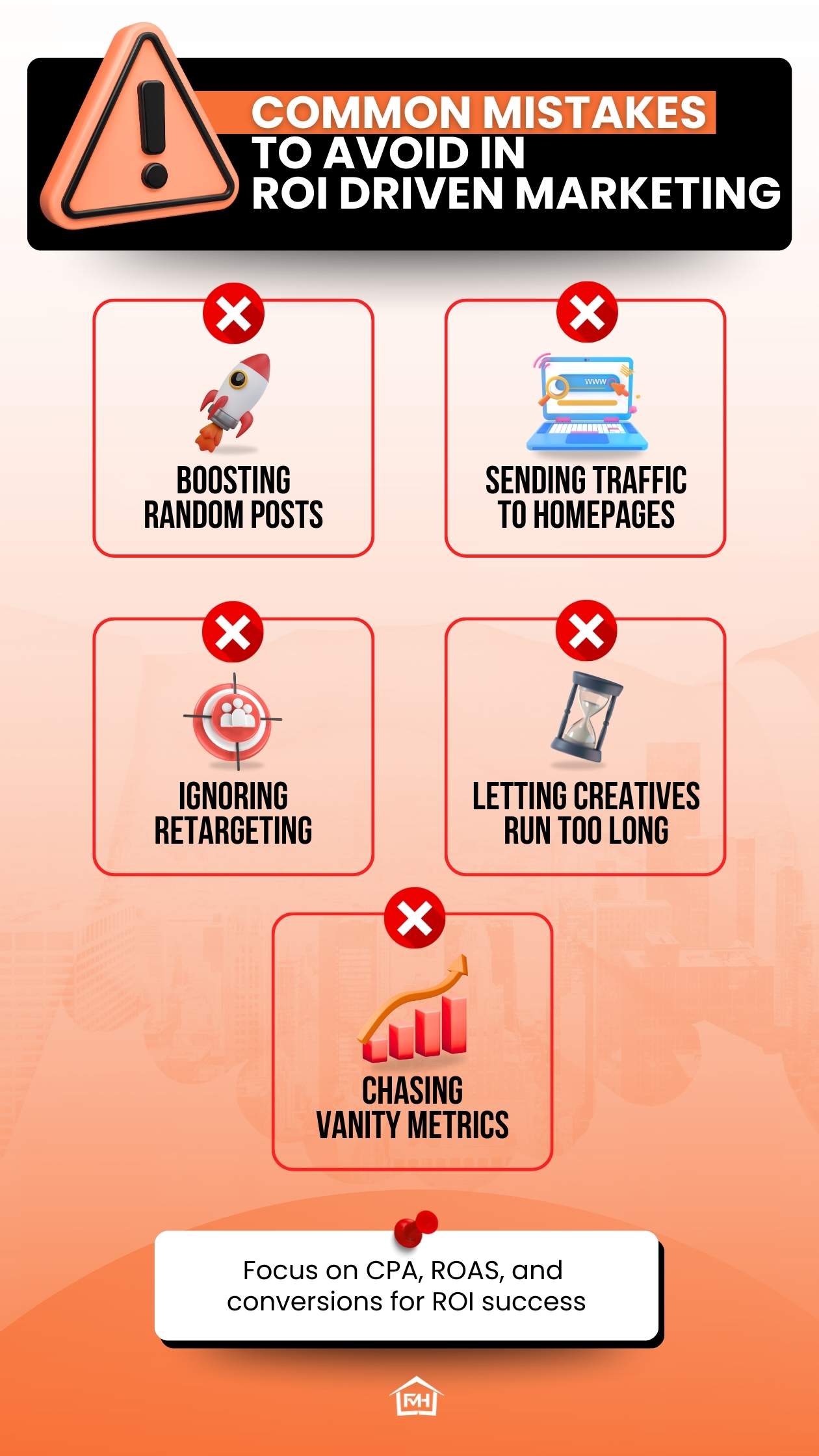
ROI Driven Marketing with Facebook Ads for Foundation Repair in 2025
ROI driven marketing is no longer optional for foundation repair businesses in 2025. It’s the foundation of sustainable growth. With rising ad costs and fierce competition, companies must prioritize measurable returns over vanity metrics. Facebook Ads offer powerful tools like advanced targeting and robust reporting to connect with homeowners in need of repair services, but success requires more than boosting random posts or running generic campaigns. It takes a structured ROI driven marketing system that blends precise targeting, persuasive offers, and continuous optimization.
In this blog, we’ll walk through a 6-step strategy to maximize ROI with Facebook Ads for foundation repair companies. You’ll also discover supporting techniques, including digital marketing for contractors, scaling campaigns, conversion tracking, and comparing Facebook vs Instagram ads—helping you make smarter, data-driven decisions that fuel long-term service business growth.

Step 1: Define Clear Objectives and KPIs for ROI Driven Marketing
One of the most common mistakes contractors make is launching ads without setting clear goals. In ROI driven marketing, every campaign must begin with well-defined objectives. Are you aiming to:
When you know your goals, you can design ads that directly support them. Without clear objectives, businesses waste money testing random tactics that don’t align with their priorities.
After setting goals, choose measurable KPIs that reveal how well campaigns are performing. These include:
Here’s an example:
If you spend $1,000 monthly on Facebook Ads, generate 20 leads at $50 each, and close 20% of those leads into jobs worth $5,000 each, you’re turning $1,000 into $20,000 in revenue. That’s a powerful illustration of ROI driven marketing at work.
Setting objectives and tracking KPIs gives you clarity, helping you decide where to invest more, when to scale, and what to cut. This is the first building block of long-term service business growth.
Step 2: Target the Right Homeowners with Precision in ROI Driven Marketing
Foundation repair is a highly specialized service. Unlike e-commerce businesses, your potential customer base is limited to homeowners within your service area. Effective ROI driven marketing requires identifying and reaching those specific people while excluding irrelevant audiences.
Step 3: Create Ads and Offers That Fuel ROI Driven Marketing
Even the best targeting won’t matter if your ads don’t capture attention and inspire action. Effective ROI driven marketing blends empathy, creativity, and irresistible offers.
Step 4: Build Landing Pages that Convert for ROI Driven Marketing
The purpose of an ad is to get the click, but the purpose of a landing page is to convert that click into a lead. Without alignment between the two, campaigns fail.
Key Elements of High-Converting Landing Pages
- Consistency
The landing page must match the ad’s promise. If the ad promotes a free inspection, the landing page headline should repeat that offer. - Mobile Optimization
With most traffic coming from mobile devices, your page must load quickly and look great on all screen sizes. - Clear Calls-to-Action (CTAs)
Repeat CTAs like “Request a Free Inspection Today” throughout the page. - Trust Signals
Add testimonials, BBB accreditation, Google reviews, and warranty badges. - Visuals
Use before-and-after photos or a short video explaining your process.
Your landing page is your digital sales rep. Every headline, image, and CTA should work together to push the visitor toward scheduling an inspection. This step is central to ROI driven marketing, because a high-converting landing page reduces CPA and improves facebook ads roi.
Step 5: Track Results and Keep Optimizing with ROI Driven Marketing
The best-performing campaigns are the ones that are constantly monitored and refined. Data is the backbone of ROI driven marketing.
Step 6: Manage Budgets Wisely to Strengthen ROI Driven Marketing
A common misconception is that bigger budgets guarantee better results. In reality, ROI driven marketing is about efficiency, not just spending more.
Budgeting Strategy
- Start small. Spend $20–$50 per day to test.
- Scale smartly. Once you identify a winning ad set, increase the budget gradually.
- 80/20 rule. Invest 80% of budget into proven performers and 20% into experimentation.
Scaling Campaigns
By 2025, Facebook’s automated bidding features simplify facebook ads scaling. These tools adjust bids in real time to maximize efficiency. With accurate tracking and clean data, you can trust the algorithm to handle optimization, freeing you to focus on strategy.
Effective budget management ensures your campaigns deliver sustainable profits while avoiding wasted spend—a hallmark of ROI driven marketing.
Bonus Tips for 2025 in ROI Driven Marketing

- Authenticity Wins
User-generated content and candid clips consistently outperform overly polished ads. Analytics show that ads featuring authentic testimonials can increase CTR by up to 35% compared to scripted content. In addition, Nielsen studies confirm that 92% of consumers trust recommendations from peers more than branded content, making authenticity an essential element of ROI driven marketing. - Seasonal Urgency
Campaigns tied to seasonal risks like spring flooding or winter frost—encourage quick action. Data from Wordstream reports that ads with seasonal urgency can improve conversion rates by 20–30% compared to evergreen campaigns. For contractors, tying offers to local weather conditions or peak risk periods maximizes response and reinforces the value of acting now. - Retargeting is Critical
Most homeowners won’t convert on the first click. Industry benchmarks reveal that retargeting campaigns deliver up to 70% higher conversion rates than prospecting campaigns alone. In the context of foundation repair, retargeting nurtures warm leads until they’re ready to book inspections, making it one of the most cost-effective strategies in ROI driven marketing. - Carousel Storytelling
Walk homeowners through a journey: the problem, the repair process, and the solution. This builds emotional connections and boosts engagement. Facebook’s own data indicates that carousel ads drive 30–50% lower cost-per-conversion compared to single-image ads because they allow brands to tell a complete story in one ad unit. - Cross-Platform Comparisons
Regularly evaluate facebook ads vs instagram ads to ensure your spend is optimized across platforms. Analytics often show that Facebook brings stronger lead generation results in home services, while Instagram performs better for brand awareness and younger demographics. By comparing platform performance through meta ads reporting, you can allocate budgets where ROI is strongest.

Common Mistakes to Avoid in ROI Driven Marketing
Avoiding these pitfalls is essential to keep your ROI driven marketing system efficient, profitable, and aligned with long-term service business growth.
Frequently Asked Questions (FAQ)
ROI driven marketing in 2025 is about more than running ads. It’s about creating a repeatable system that drives consistent returns. By defining clear objectives, refining targeting, creating compelling offers, optimizing landing pages, tracking data, and scaling budgets wisely, foundation repair businesses can transform Facebook into a powerful growth engine.
Think of your campaigns as long-term investments. With ongoing management and smart adjustments, you’ll achieve steady lead flow, higher profits, and sustained service business growth. In a competitive market, the businesses that embrace structured ROI driven marketing will secure their spot as trusted local experts.
Ready to elevate your foundation repair business? Start implementing your ROI driven marketing strategy today and watch your ROI climb!




